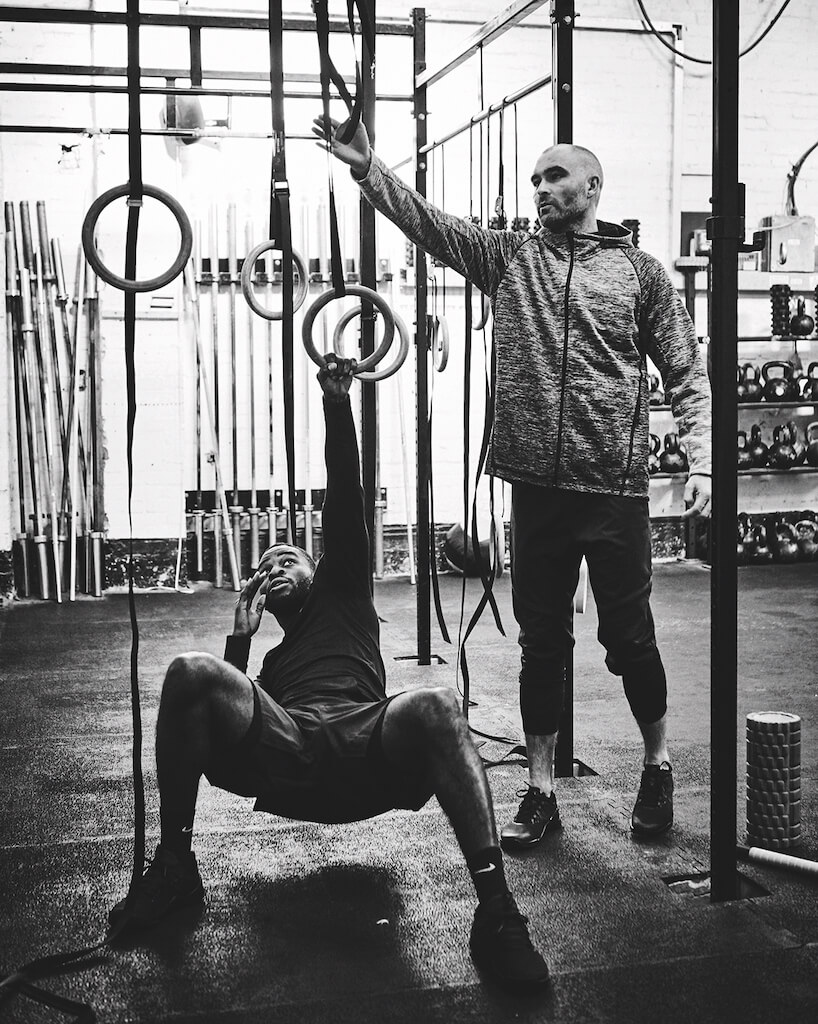He may be best known as the man behind Anthony Joshua’s knockout power, but Nike Master Trainer Jamie Reynolds has also worked with a number of up-and-coming fighters and a crop of current Premier League players.
MF sat down with @jamie_velocity to talk S&C, core values and the unique drive of elite athletes.
MF: The athletes you work with are predominantly footballers and boxers – on the face of it, they’re two very different disciplines, but are there any training methods you employ
for both?
When it comes to the work that these guys do in the gym, the truth is that around 70 to 80 per cent of it is the same no matter the sport.
The systems and principles used to help make a footballer stronger aren’t going to vary too much to those used to add strength to an NFL player, or a tennis player, or a boxer.
The differences come when we look at how to transfer what we learn in the gym to the pitch/ring/court and also how we train the athletes’ energy systems for the specific demands of their sport/position.
MF: How much importance do you place on core strength?
I place a lot of importance on training the core in the right way, so it’s important to remember that during movements your trunk is more of a conductor of force than a producer of it, and should be trained with that in mind.
So, if our goal is to move and perform better, exercises like deadbugs, palof presses and bear crawls are likely to be on the menu. However, ten different variations of ab crunches definitely won’t.
True ‘core strength’ is having the right mixture of stability and mobility though our hips, torso and shoulders.

Reynolds training Nike-sponsored boxer Joshua Buatsi
MF: What are the main areas you look to improve when working with footballers?
Football is intermittent in nature and the modern player needs to be a solid all-round athlete.
Players are required to cover around 12km per game, they need to be able to repeatedly sprint and change direction at speed during 90 minutes of play, and they also need to have the strength to protect the ball when in position.
When designing a programme for a player, we have to take all these physical demands into consideration, as well as any individual needs that are specific to that player.
MF: Do you think there’s a problem with people following generic training plans they find online?
A training programme that takes into consideration the specific needs of an individual and is designed after careful assessment is always going to trump a generic training plan – in the same way a tailor-made suit is always going to fit and look way better than one you grab off the shelf.
That’s not to say that there aren’t some great online training plans and workouts that people can use to help them train smarter and get great results.
The problem, I believe, comes when people don’t go to the right source for the information. There are 1,001 self-proclaimed ‘gurus’ out there ready to take your money and sell you a BS programme – and unfortunately these guys seem to appeal to the masses.
For anyone looking for a great online source for all things training, I would recommend the Nike Training Club (NTC) app. It has loads of workouts created by some of the best coaches in the world and it can help you individualise a training programme.
View this post on Instagram
MF: What common traits do all the elite athletes you work with possess – what sets them apart?
Self-belief is probably the biggest characteristic that most elite athletes I’ve encountered possess. They believe in themselves and their own abilities.
But all the self-belief in the world won’t take you to the top of any profession without the grit, determination and discipline to go with it.
MF: Do you have a favourite exercise or workout you always use when training clients?
I’d say it’s more a case that we have preferred movements that we train rather than favourite exercises or workouts.
Some form of squat; some form of hinge, such as a deadlift or Romanian deadlift; some form of upper-body push; and then some form of upper-body pull, like pull-ups or bent-over rows. Those are the main areas that are always factored into our training.
MF: If you could only have one bit of equipment to work with, what would you choose?
I’d have to go with a suspension trainer purely for the versatility and the ability to use your own bodyweight to vary the load of each movement.
Either that or one of those ‘Ab Crunch 5000’ machines that turn up on your TV at 3am, because those things guarantee you’ll look like Chuck Norris in only two weeks (or your money back)…
MF: Can every aspect of performance be improved, or are there certain things you either have, or you don’t?
For sure everyone can improve at whatever it is they set out to get better at. We can all run faster, jump higher, lift more and learn to move better if we dedicate the time to doing the right things.
But it’s also true that unless you picked the right mum and dad, it’s unlikely you’ll have hardware needed to win a gold medal in the 100m, no matter how hard you train.
View this post on Instagram
MF: Finally, is there anything everyday gym-goers tend to neglect, but really should be working on?
Don’t just focus on the sexy stuff. It’s cool to throw weights around or set a new 5k PB, but by also focusing on recovery, nutrition and mindset as part of a more holistic approach to your training, you will not just improve your performance in the gym, but I believe you’ll also see the benefits in all other areas of your life.







